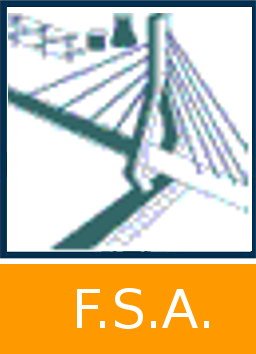Using passive cooling techniques to improve resilience to global warming of nearly zero-energy buildings
Zeoli, Alanis 
Promotor(s) :
Lemort, Vincent 
Date of defense : 24-Jun-2021/25-Jun-2021 • Permalink : http://hdl.handle.net/2268.2/11569
Details
| Title : | Using passive cooling techniques to improve resilience to global warming of nearly zero-energy buildings |
| Translated title : | [fr] Utilisation de techniques de refroidissement passives pour améliorer la résilience au réchauffement climatique des bâtiments quasi zéro énergie |
| Author : | Zeoli, Alanis 
|
| Date of defense : | 24-Jun-2021/25-Jun-2021 |
| Advisor(s) : | Lemort, Vincent 
|
| Committee's member(s) : | Attia, Shady 
Gustin, Pierre Dewallef, Pierre 
|
| Language : | English |
| Keywords : | [en] Passive cooling [en] Global warming [en] Nearly zero-energy buildings [en] Resilience [en] Overheating [en] Thermal comfort |
| Discipline(s) : | Engineering, computing & technology > Energy |
| Target public : | Researchers Professionals of domain Student General public |
| Institution(s) : | Université de Liège, Liège, Belgique |
| Degree: | Master en ingénieur civil électromécanicien, à finalité spécialisée en énergétique |
| Faculty: | Master thesis of the Faculté des Sciences appliquées |
Abstract
[en] With climate change, the energy consumption of buildings for cooling purposes is expected to rise, further enhancing global warming through the increase of greenhouse gas emissions. To break this vicious circle, it is essential to decrease the anthropogenic CO2 emissions by lessening the energy consumption in all sectors. Buildings are responsible for 40% of energy consumption in the European Union, according to the International Energy Agency (IEA). The urge to build more energy-efficient buildings resulted in the emergence of nearly zero-energy buildings (nZEB). However, the specifications the nZEB design should comply with might not be sufficient to prevent the risk of overheating in summer, hence the purchase of an active cooling system.
Passive cooling techniques are investigated through a dynamic simulation of a nearly zero-energy dwelling. Their efficiency is assessed based on their ability to improve thermal comfort while limiting the increase in energy consumption. Thermal comfort is measured based on the theory of adaptative comfort which is the most relevant for a residential building. The passive cooling techniques can be combined to ensure the resilience of the building to global warming. It was found that the most efficient techniques are the ones relying on ventilative cooling. In Western Europe, day cooling should be combined with night cooling to reduce the overheating risk and improve thermal comfort by 39%. Solar protections and smart glazing also offer an efficient protection against overheating. They improve thermal comfort by respectively 34 and 22%.
The effectiveness of the combined passive cooling techniques is studied over an extreme meteorological event, which is likely to occur by 2100 if nothing is done to prevent global warming. Twenty days of intense heat are studied to evaluate the resilience of a nZEB. It was found that the most efficient combination includes night cooling, thermochromic glazing and adiabatic cooling. Adiabatic cooling is particularly efficient during heat waves. Those techniques allow to decrease the indoor temperature by almost 10°C. However, occupants’ behaviour could have a negative impact on the cooling techniques efficiency.
File(s)
Document(s)
Annexe(s)

 ComparisonOfPassiveCoolingTechniquesCombinations.png
ComparisonOfPassiveCoolingTechniquesCombinations.png
Description: -
Size: 121.32 kB
Format: image/png
Cite this master thesis
APA
Zeoli, A. (2021). Using passive cooling techniques to improve resilience to global warming of nearly zero-energy buildings. (Unpublished master's thesis). Université de Liège, Liège, Belgique. Retrieved from https://matheo.uliege.be/handle/2268.2/11569
Chicago
The University of Liège does not guarantee the scientific quality of these students' works or the accuracy of all the information they contain.


 Master Thesis Online
Master Thesis Online



 All files (archive ZIP)
All files (archive ZIP)